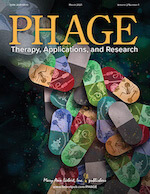I thought I’d do something new this week — maybe it’ll become a recurring format for C&T issues if people like it! I’m going to share some off-the-cuff tips and tricks that I find myself saying to labmates who come to me asking for phage help. I would love for readers to submit theirs, and I’ll compile them and share them here! Send your name or choose to be anonymous, it doesn’t matter to me!
Tip #1: Clean & verify
Are you purifying phages using a reusable system, like an AKTA Pure, AKTA Flux, or a reused PD-10 or Endotrap column? AFTER you clean it (with whatever cleaning reagent - 1M NaOH is my go-to, assuming the column/system is compatible with it), run some buffer through it, and do a phage titre on that buffer before you use the column/system for another phage! If the titre shows even ONE plaque, I would repeat the cleaning procedure, and repeat the titre until you get zero (or at least below a limit of detection you’re comfortable with). Otherwise, next time you use it, you’ll be cross-contaminating your own samples (which is even an issue if you’re using the column only for versions of the same phage… technically, every new batch of phages is different from any other batch, due to genetic drift potential). Clean your equipment, then make sure it’s clean (by titering what flows through it) before reuse!
Tip #2: Try steric exclusion chromatography for filamentous phages
Purifying a filamentous phage, and feeling like you’re not getting rid of enough endotoxin? Have you tried hydrophobic interaction chromatography, but your phage isn’t really binding the column? Don’t have time (yet) to engineer an affinity tag for purification that way? Try steric exclusion chromatography, where you mix phage with a PEG-based buffer, and run it at high speed through an AKTA Pure-type protein purification system. Use this paper as a reference - their method is working really well for me! (Thanks to Arne Echterhof for directing me to this paper - I am so glad to have it!) I will try it on lytic phages next, and see if it works similarly.
Tip #3: Change your top agar percentage to expose invisible phages (or shrink overly huge plaques)
Are you not seeing plaques in your plaque assays, but think you should? Consider changing your top agar percentage. If you are using 0.5% (generally a standard recipe), you could try making a batch of 0.4 or 0.3 %, and re-plating your samples. Really large phages sometimes don’t diffuse well through agar, so the plaque will be so tiny you can’t see it. It can help to lower the agar percentage so more diffusion happens, and plaques become more visible. Alternatively, if you’re getting annoyed that your plaques are too big, and hard to count, you can go higher, say to 0.6 or 0.7% agar. This may shrink them so they’re easier to count. Of course, there’s a limit — too little agar will not solidify (I think 0.3% is the minimum I’ve been happy with?) and too much will probably block diffusion too (but I haven’t really pushed it in that direction - let me know if you do!).
Tip #4: Plaque size so big you can’t count? Check plaque assays earlier (~after 2 hours instead of overnight)
Related to the above - are you working with phages that make giant plaques, way too quickly, like phiX174 phages? You might try incubating them only for 2 hours, then checking them up next to a window to see countable plaques. I was shocked that this worked! It also gives you a convenient ‘same-day’ titre, which is so luxurious! Instant results! Alternatively if you don’t have two hours because you’re about to leave, you can leave it at room temperature overnight instead of 37C. This will help slow things down and give you a fighting chance to count them before they crowd into each other. Of course, you could always just do more dilutions so you do have countable numbers! Also, this will only work with sufficiently fast-growing bacteria (for me it works for E. coli but not for Pseudomonas).
Tip #5: Titres too low? Give broth more surface area (and add calcium and magnesium!)
Are you sad that your phage titres are too low? You could try a few things that sometimes work, like using an empty Petri dish and using that instead of a flask of media. I have found 10 mL in the bottom of a Petri dish (no agar layer! And no shaking!) led to at least a log higher phage production with some phages, at least Campylobacter phages. I think because of the high surface area to volume ratio - I think some cells/phages like that. Alternatively, my other go-to is to add 10 mM CaCl2 and 10mM MgSO4 to your broth media - phages love these cations! Adding them to existing lysate can also make your titre appear much higher - maybe because it helps phages not clump together so much?
There you have it - those are the 5 tips that came to mind this week. Let me know if any of them help you, or if they don’t work at all, or if they spark ideas of stuff you’ve tried that could help other community members! (Write them down and email them to me now, before you forget!! Rough is fine - I can fix sentence structure if you send me rough bullets).
Until next time,
Jessica








